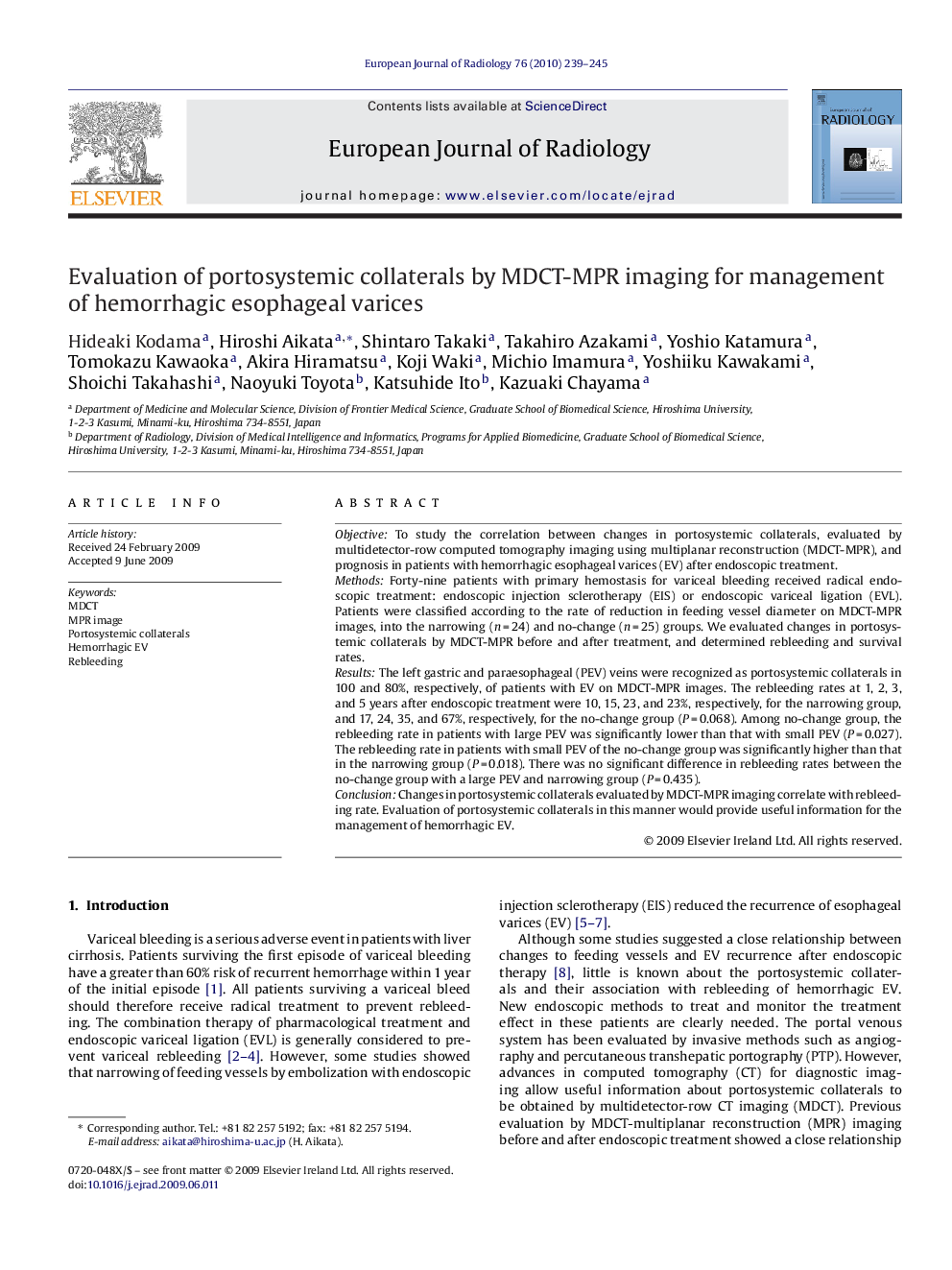| Article ID | Journal | Published Year | Pages | File Type |
|---|---|---|---|---|
| 4227203 | European Journal of Radiology | 2010 | 7 Pages |
ObjectiveTo study the correlation between changes in portosystemic collaterals, evaluated by multidetector-row computed tomography imaging using multiplanar reconstruction (MDCT-MPR), and prognosis in patients with hemorrhagic esophageal varices (EV) after endoscopic treatment.MethodsForty-nine patients with primary hemostasis for variceal bleeding received radical endoscopic treatment: endoscopic injection sclerotherapy (EIS) or endoscopic variceal ligation (EVL). Patients were classified according to the rate of reduction in feeding vessel diameter on MDCT-MPR images, into the narrowing (n = 24) and no-change (n = 25) groups. We evaluated changes in portosystemic collaterals by MDCT-MPR before and after treatment, and determined rebleeding and survival rates.ResultsThe left gastric and paraesophageal (PEV) veins were recognized as portosystemic collaterals in 100 and 80%, respectively, of patients with EV on MDCT-MPR images. The rebleeding rates at 1, 2, 3, and 5 years after endoscopic treatment were 10, 15, 23, and 23%, respectively, for the narrowing group, and 17, 24, 35, and 67%, respectively, for the no-change group (P = 0.068). Among no-change group, the rebleeding rate in patients with large PEV was significantly lower than that with small PEV (P = 0.027). The rebleeding rate in patients with small PEV of the no-change group was significantly higher than that in the narrowing group (P = 0.018). There was no significant difference in rebleeding rates between the no-change group with a large PEV and narrowing group (P = 0.435).ConclusionChanges in portosystemic collaterals evaluated by MDCT-MPR imaging correlate with rebleeding rate. Evaluation of portosystemic collaterals in this manner would provide useful information for the management of hemorrhagic EV.
